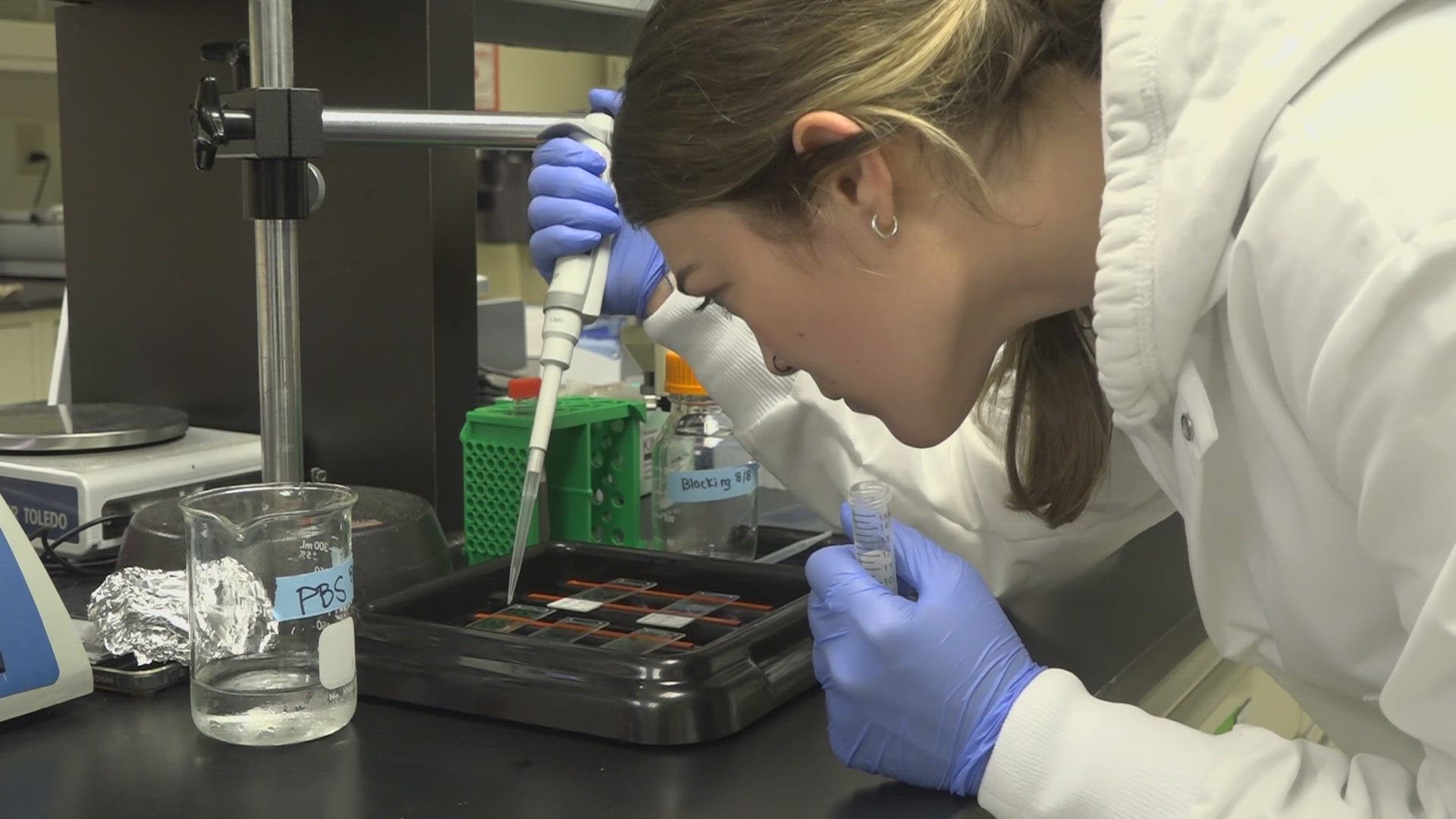BIDDEFORD, Maine — Many people have eye pain on a day-to-day basis, most likely because a speck of dust or an eyelash is bothering the eye's cornea, or even when we cook with onion in the kitchen, get shampoo in our eye by mistake, or when we cut hot peppers and then rub our eyes -- to name a few examples.
In most of those cases, the eye pain goes away in a reasonable timeframe, but for other people, eye pain is more constant and doesn't get triggered just by daily activities.
Dr. Ian Meng is a professor in the Department of Biomedical Sciences, the director of the Center of Biomedical Research Excellence (COBRE) for the Study of Pain and Sensory Function, and also the director for the Center for Excellence in the Neurosciences.
Meng said some people have eye pain because of dry eye, but in other cases their eyes are not dry, and they still feel pain.
That's where this research comes in.
"We can't necessarily see the damage, but it's there, and it's causing the activity of these neurons to generate that pain, and that's what we are trying to do, to figure out ways to shut that down," Meng said.
He said the reason to that pain lies in the cornea, which is the outermost layer of the eye.
“The cornea is the most densely innervated structure in your entire body, and as such it is exquisitely sensitive to anything that can be potentially damaging to your eyes,” Meng explained. “Because vision is so important to everything that we do, the nerves in the cornea are there to protect your eye and keep them from getting damaged.”
Meng said he is working along with scientists and students at Tufts University School of Medicine and Brigham and Women’s Hospital for this research project.
It's happening thanks to a $6.6 million grant from the National Eye Institute NEI, which is a division of the National Institutes of Health.
The goal is to develop new, more effective treatments for corneal pain. For Meng, the ideal treatment would be an eye drop rather than a pill taken by mouth.
"The five-year grant will allow the team to examine changes to the corneal nerves in response to injury and chronic dry eye, both serious clinical problems," Meng said.
Meng said the study could explain why some other types of pain people suffer from are closely related to corneal pain.
“We believe that the neurons innervating the cornea have a uniquely strong connection to the limbic system to elicit an emotional response to corneal pain,” Meng explained. “It’s like an express train to the brain’s emotional center.”
Meng said one of the factors that makes this research unique is that NEI is funding many universities to all collectively investigate corneal pain, its factors and possible treatments. The researchers regularly convene to discuss their progress, findings, and methodologies. Meng’s research is just one of eight such groups participating in what he said is a novel, transparent method of scientific inquiry.
“This is a bold initiative from the National Eye Institute,” Meng said. “Oftentimes, scientists will develop their own techniques and keep the details to themselves. However, with this project, we’re all trying to advance the field in collaboration with each other. I’m very much looking forward to learning from those other groups and possibly applying what I learn to the science that I do.”
For the study, Meng and the students are using genetically modified mice to study the neurons or nerves in their eyes.
Meng said people should reach out to an optometrist if they suffer from constant eye pain.
Regarding the study, the doctor is hopeful his team along with several others throughout the U.S. will have some solid research results for a potential eye pain treatment in the next five years.
"What people are now noticing is that maybe it's actually more of a neuropathic kind of pain, so what that means is that there's damage to the neurons, that's actually producing the pain, and so the treatment for those obviously would be very different," Meng said. "But what we are looking in the lab is to find specific kinds of targets on these neurons that you might be able to develop drugs for, where you can then intercede and put an eye drop in that might actually reduce the activity of those neurons that are driving the pain."
Click here to learn more about the other research projects happening at UNE.

